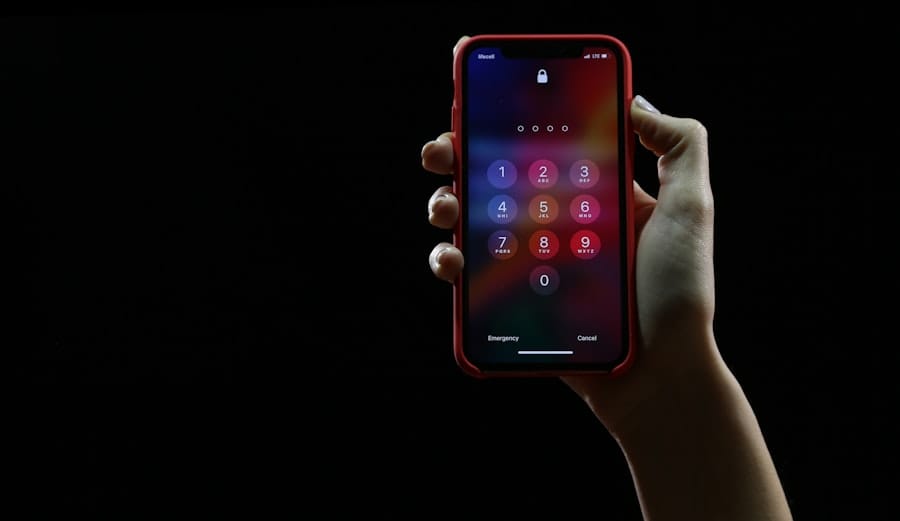Brute force software is a cybersecurity tool used to crack passwords and encryption by systematically attempting all possible combinations until the correct one is found. This method is employed by both hackers seeking unauthorized access to sensitive data and cybersecurity professionals testing the strength of their systems. The software automates the process of trying various combinations of characters, numbers, and symbols to guess a password or encryption key.
While highly effective, brute force attacks can be time-consuming and resource-intensive, especially when dealing with complex passwords or encryption algorithms. The principle behind brute force software is that eventually, all possible combinations will be exhausted, leading to the discovery of the correct password or encryption key. This makes it a powerful tool for hackers, as it can theoretically crack any password or encryption given sufficient time and computing power.
However, the effectiveness of brute force software is dependent on the complexity of the target password or encryption. Strong passwords and encryption algorithms with long keys can require an impractical amount of time to crack using brute force methods, making them more resistant to such attacks. Understanding the functionality and limitations of brute force software is essential for both cybersecurity professionals and individuals seeking to protect their data.
This knowledge helps in developing stronger security measures and implementing more effective password policies to mitigate the risk of successful brute force attacks.
Key Takeaways
- Brute force software is a tool used to crack passwords and gain unauthorized access to systems or data.
- Brute force software works by systematically trying all possible combinations of characters until the correct password is found.
- Brute force software is used to protect sensitive data such as passwords, encryption keys, and personal information.
- When choosing brute force software, consider factors such as speed, compatibility, and security features.
- Implementing brute force software requires careful consideration of legal and ethical implications, as well as proper training for users.
How Brute Force Software Works
Brute force software works by systematically trying every possible combination of characters, numbers, and symbols until the correct password or encryption key is found. This process is automated by the software, which can rapidly generate and test thousands or even millions of combinations per second. The software typically starts with the simplest combinations, such as single characters or short strings, and then gradually works its way up to more complex combinations as needed.
This method is effective because it does not rely on any specific knowledge about the password or encryption being targeted, making it a versatile tool for cracking a wide range of security measures. One of the key factors that determine the effectiveness of brute force software is the length and complexity of the password or encryption being targeted. Short and simple passwords or encryption keys can be cracked relatively quickly using brute force methods, while longer and more complex ones can take an impractical amount of time to crack.
This is because the number of possible combinations increases exponentially with the length and complexity of the password or encryption key. As a result, strong passwords and encryption algorithms with long keys are much more resistant to brute force attacks, making them a more secure choice for protecting sensitive data.
Types of Data Protected by Brute Force Software

Brute force software can be used to crack a wide range of security measures, including passwords, encryption keys, and other types of authentication mechanisms. Password cracking is one of the most common uses of brute force software, as it can be used to gain unauthorized access to accounts and systems protected by passwords. This includes everything from email and social media accounts to online banking and corporate networks.
Brute force software can also be used to crack encryption keys, which are used to secure data in transit or at rest. This includes everything from Wi-Fi passwords and SSL/TLS certificates to encrypted files and databases. In addition to passwords and encryption keys, brute force software can also be used to crack other types of authentication mechanisms, such as biometric security systems and CAPTCHA challenges.
Biometric security systems, which use physical characteristics such as fingerprints or facial recognition to verify identity, can be vulnerable to brute force attacks if they do not have sufficient safeguards in place. Similarly, CAPTCHA challenges, which are used to distinguish between humans and automated bots, can be cracked using brute force methods if they are not properly implemented. Understanding the types of data protected by brute force software is important for both cybersecurity professionals and individuals looking to secure their data against unauthorized access.
Choosing the Right Brute Force Software for Your Needs
| Brute Force Software | Features | Compatibility | Price |
|---|---|---|---|
| John the Ripper | Password cracking, Unix crypt, Windows LM hashes | Windows, Linux, Mac OS | Free |
| Hashcat | GPU acceleration, multiple algorithms support | Windows, Linux, Mac OS | Free |
| Cain and Abel | Dictionary and brute-force attacks, network sniffing | Windows | Free |
| Hydra | Network login cracker, supports multiple protocols | Windows, Linux, Mac OS | Free |
When choosing brute force software for your cybersecurity needs, it’s important to consider a few key factors that can impact its effectiveness and usability. One of the most important factors to consider is the type of security measure you are trying to crack, whether it’s a password, encryption key, or other authentication mechanism. Different types of brute force software may be better suited for different types of security measures, so it’s important to choose one that aligns with your specific needs.
Another important factor to consider when choosing brute force software is its compatibility with the systems and protocols you are targeting. Some brute force software may be designed specifically for certain operating systems or network protocols, so it’s important to ensure that the software you choose is compatible with your target systems. Additionally, you should consider the computing power and resources required to run the brute force software effectively.
Some types of brute force software may require significant computing power and resources to crack complex security measures, so it’s important to assess whether your existing infrastructure can support the software’s requirements.
Implementing Brute Force Software for Data Protection
Implementing brute force software for data protection requires careful consideration of ethical and legal implications, as well as best practices for using the software effectively. When using brute force software for ethical purposes, such as testing the strength of your own systems, it’s important to obtain proper authorization and consent from relevant stakeholders. This may include obtaining permission from system administrators or legal departments before conducting any testing with brute force software.
In addition to ethical considerations, implementing brute force software for data protection also requires adherence to best practices for using the software effectively. This includes ensuring that the software is configured and used in a responsible manner that minimizes potential risks and impacts on target systems. It’s important to carefully plan and execute any testing with brute force software in order to minimize disruption and potential security vulnerabilities.
Best Practices for Using Brute Force Software

When using brute force software for data protection, there are several best practices that can help ensure its effectiveness and minimize potential risks. One important best practice is to use strong passwords and encryption algorithms that are resistant to brute force attacks. This includes using long and complex passwords that are difficult to guess or crack using automated methods.
Additionally, using strong encryption algorithms with long keys can help protect sensitive data from unauthorized access. Another best practice for using brute force software is to regularly test the strength of your own systems in order to identify and address potential vulnerabilities before they can be exploited by malicious actors. This may include conducting regular penetration testing with brute force software in order to assess the effectiveness of your existing security measures and identify any weaknesses that need to be addressed.
The Future of Brute Force Software in Data Protection
The future of brute force software in data protection is likely to be shaped by advancements in computing power and cybersecurity technologies. As computing power continues to increase, brute force attacks may become more feasible for cracking increasingly complex security measures. This means that cybersecurity professionals will need to continue developing stronger passwords and encryption algorithms in order to protect sensitive data from unauthorized access.
Additionally, advancements in cybersecurity technologies may lead to new methods for detecting and mitigating brute force attacks in real-time. This could include the development of machine learning algorithms that are able to identify patterns indicative of brute force attacks and automatically respond in order to protect target systems from unauthorized access. Overall, the future of brute force software in data protection will likely be characterized by a constant arms race between attackers seeking to crack security measures and defenders seeking to protect sensitive data from unauthorized access.
As a result, it will be crucial for cybersecurity professionals and individuals alike to stay informed about the latest developments in brute force software and implement best practices for protecting their data against unauthorized access.
If you are interested in learning more about the security concerns related to the metaverse, you should check out the article on challenges and opportunities in the metaverse: privacy and security concerns. This article discusses the potential risks and vulnerabilities that come with the increasing use of virtual reality and the metaverse, including the potential for brute force software attacks. It provides valuable insights into the importance of addressing these concerns to ensure a safe and secure virtual environment for all users.
FAQs
What is brute force software?
Brute force software is a type of computer program that systematically tries all possible combinations of characters to crack passwords or encryption keys.
How does brute force software work?
Brute force software works by attempting every possible combination of characters until it finds the correct password or encryption key. This method is time-consuming but can be effective, especially for weak or short passwords.
What are the uses of brute force software?
Brute force software is commonly used for password cracking, encryption key cracking, and penetration testing. It can also be used by hackers to gain unauthorized access to systems or data.
Is brute force software legal?
The use of brute force software for ethical purposes, such as penetration testing with proper authorization, is legal. However, using it to gain unauthorized access to systems or data is illegal and considered hacking.
How can I protect against brute force attacks?
To protect against brute force attacks, it is important to use strong and complex passwords, implement account lockout policies, and use multi-factor authentication. Additionally, regularly updating software and using encryption can help mitigate the risk of brute force attacks.











Leave a Reply